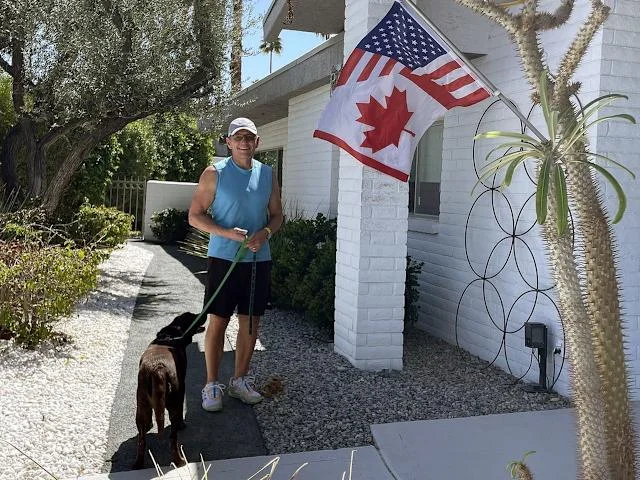
Palm Springs Faces a Canadian Exodus: How Politics and Tariffs Are Draining the Desert Oasis
The desert sun of Palm Springs, once a beacon for Canadian snowbirds escaping harsh winters, is now under a chilling economic shadow. A mounting exodus of Canadian tourists and seasonal residents—spurred by political tensions and harsh U.S. tariffs—threatens to upend the local economy and reshape the fabric of this famously inclusive city. The stakes have never been higher for a Californian paradise facing an international rift.

The trigger is clear: Former President Donald Trump’s administration imposed aggressive tariffs and employed incendiary rhetoric, at one point calling Canada "America’s 51st state" and mocking its leadership. More recently, a 25% levy was hammered onto Canadian imports and automobiles, sparking swift retaliatory measures from Ottawa. The political frost quickly turned economic, as Canadian airliners cut seasonal routes and travel agencies reported U.S. bookings plunging by up to 80%—with Palm Springs taking the brunt.
Phil Briddon, a retired Canadian mortgage specialist, encapsulates the sentiment of many compatriots: "At some point you realize you’ve got to do your part. We don’t want to spend money in a country that doesn’t respect us." In a move laden with both personal and political disappointment, Briddon and his wife are packing up after more than a decade of wintering in Palm Springs, trading the peace of the desert for new horizons in Mexico or Europe. Their story echoes through a community where Canadians own as much as 7% of second homes and used to contribute more than $236 million a year to the Coachella Valley’s economy.

The damage goes beyond lost hotel bookings and empty restaurant seats. Palm Springs Mayor Ron deHarte, orchestrator of a new wave of heart-emblazoned street banners reading "Palm Springs ❤️ Canada," voiced the alarm: "If there is not a return of Canadians next year, it will have a huge impact." He estimates up to 2,000 hospitality jobs—maids, janitors, waitstaff—are at risk. More than mere visitors, Canadians have been volunteers and part-time locals, deeply integrated into civic life. Their absence is leaving a social and economic void.
Local businesses, too, are sounding the alarm. Bob Smiland, owner of Desert Hand Wash, revealed, “The Canadian business is 30% of my business in the winter. It’s essential we do something significant.” Real estate agents, like Paul Kaplan and Sherri Dettman, report a wave of Canadians inquiring about selling vacation homes, fearing the future under ongoing tariff wars and unfriendly policies.
In reaction, Palm Springs is rallying. Local leaders emphasize that the welcoming spirit of this LGBTQ+-friendly city stands apart from Washington, D.C.’s tone. “This is not Palm Springs. This is Trump,” declared Kaplan. The city’s banners and business initiatives reflect a desperate hope to assure Canadians they still belong.
The situation is a potent illustration of how geopolitics intertwines with everyday lives—shaping destinies not only through tariffs and tweets but also through friendships, volunteerism, and the rhythm of seasonal migration. As the snowbird season closes and uncertainties linger, one question looms: Will gesture and goodwill be enough to thaw the diplomatic freeze and bring the Canadians home?
What do you think Palm Springs should do next? Should Canadian tourists look past the politics, or is their boycott justified? Join the conversation below and share your perspective on the future of this iconic California destination.
Related issues news
Can Canadians travel to the US?
Information for Canadians However, all Canadians entering the U.S. by air require passports, and Canadians entering the U.S. by land or sea must have a Western Hemisphere Travel Initiative (WHTI)-compliant travel document. Some Canadians, do require visas.
Why do these BC snowbirds want out of Palm Springs?
Briddon said tariff tensions, a worsening political climate and new Department of Homeland Security rules that require all foreign nationals, including Canadians, who plan to stay in the U.S. for 30 days or longer to apply for registration have all played a part.